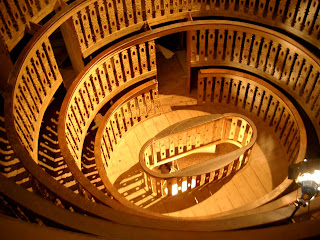Since the phoenix in Chinese folklore is an imaginary bird, no one has ever seen its feather. Therefore, the feather of a Chinese phoenix is used to refer to something very precious. In East Asia, another imaginary beast is the qilin (麒麟), which is thought to be based on a giraffe.
The qilin is used to refer to a rarely found talented person. The derivative qilin-a refers to a child prodigy. In praising two sons of his acquaintance Du Fu (杜甫, 712-770), a Tang Dynasty (唐朝, 618-907) poet, wrote, “Since one is sent by Confucius and the other is sent by Buddha, both of you must be heaven-sent qilin-a.” I suppose the son of Du Fu must have been jealous of such high praise. A qilin, as described in ancient Chinese literature, has the body of a deer, tail of a cow, hooves and mane of a horse and horns on its forehead.

A modern version of the mythical qilin
While today people associate the qilin with giraffes, ancient Chinese literature did not describe it as having a long neck. The first giraffe that arrived in China from Africa was brought by the Ming Dynasty (明朝, 1368-1644) fleet. The fleet explored a sea route to Africa under the command of Admiral Zheng He (鄭和, 1371-1435) and dedicated the giraffe to Emperor Yongle (永樂, 1360-1424, r.1402-1424). The emperor, who was amazed to see such a mythical-looking animal for the first time, must have thought it was a spiritual being and called it a qilin, an imaginary beast.
 A painting, known as Qilin Brings Serenity (rui) Ode (1414),
A painting, known as Qilin Brings Serenity (rui) Ode (1414),
by a court artist showing the Zheng He's giraffe
A mural that was excavated here in Korea from the Chonmachong (천마총, 天馬塚, Tomb of the Flying Heavenly Horse) in Kyongju (慶州市, 경주) in 1973 was opened to public viewing a few weeks ago. It is hard to see with the naked eye, but if one looks at a photo taken of it with an infrared camera, it is clear that the horse has horns. Therefore, some claim it is not a horse, but a qilin. Whether it is a horse or a qilin, the value of the mural, a national treasure created by Korean ancestors during the Silla Kingdom (新羅, 신라, 57 BC-935 AD), will not change. As there is a controversy, however, I hope the true identity of the mythical animal is clarified.
 Cheonmado (Mural of Heavenly Horse) (5th-6th century)
Cheonmado (Mural of Heavenly Horse) (5th-6th century)
People in the old days believed that a
qilin is not seen in ordinary days but appears when a benevolent lord comes to the throne and rules the country compassionately. If the mural drawn by a Silla painter is a
qilin, it must be a painting that was drawn with the hope of the appearance of a sage king. Even though 1500 years have passed, the wish of the people here in Korea remains the same.
Giorgio Olivotto
Seoul, Korea
April 18, 2010

 Qilin Brings Serenity (rui) Ode (1414),
Qilin Brings Serenity (rui) Ode (1414), Chonmado (Affresco del Cavallo Celeste) (V-VI secolo)
Chonmado (Affresco del Cavallo Celeste) (V-VI secolo)








